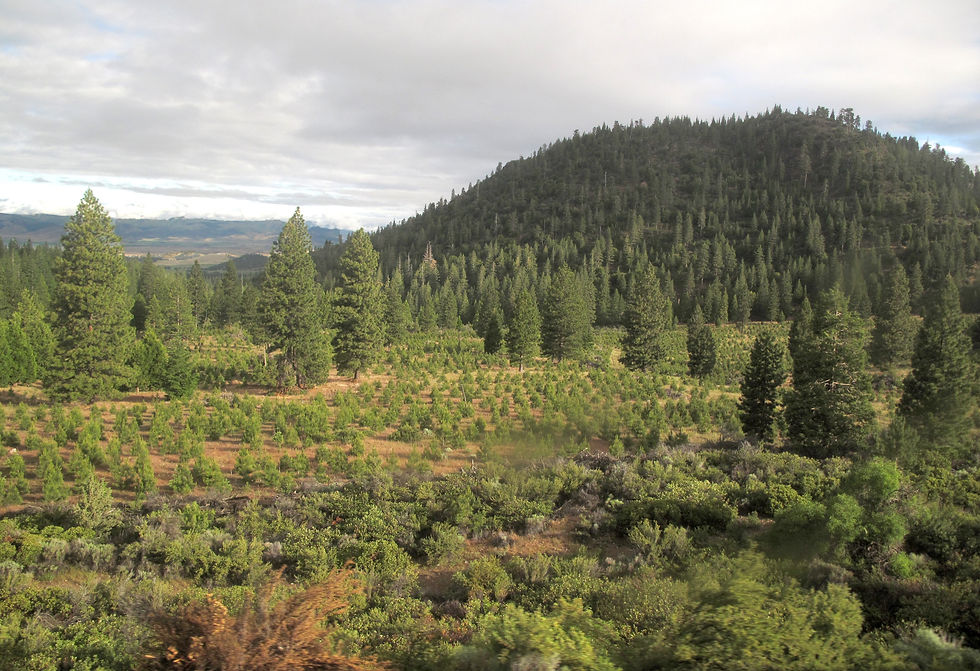How Forest Protection Can Safeguard Communities from Wildfires
- Shane

- Sep 22
- 4 min read
Living near the beautiful forests of southeastern Washington is a blessing. But with that beauty comes a responsibility - protecting our land from wildfires. Wildfires can spread fast and cause serious damage, especially in rural areas like the Walla Walla Valley. The good news? We can take practical steps to reduce the risk and keep our forests safe. Let’s chat about how communities can come together to protect these precious areas and what you can do on your own property.
Why Forest Protection Matters in Our Backyard
Forests are more than just trees. They’re homes for wildlife, sources of clean air, and part of what makes our region special. But dry brush, dead trees, and unmanaged debris can turn these natural treasures into wildfire fuel. That’s why forest protection is crucial here.
When we talk about forest protection, we mean managing the land to reduce fire hazards. This includes clearing out excess brush, removing dead wood, and creating defensible spaces around homes and structures. It’s about making the forest less likely to catch fire and easier to control if a fire does start.
Taking care of our forests also means preserving the land’s health. Removing unwanted brush sustainably ensures that nothing goes to waste. Trees removed from your property can be turned into custom lumber or firewood, giving them a second life instead of just burning or rotting away.

Practical Steps for Forest Protection on Your Property
You don’t need to be a forestry expert to make a difference. Here are some straightforward actions you can take to protect your land:
Create Defensible Space
Clear at least 30 feet around your home of dry grass, leaves, and brush. This space acts as a buffer zone, slowing down or stopping a wildfire from reaching your house.
Remove Dead Trees and Brush
Dead wood is like kindling waiting to catch fire. Regularly remove dead trees, fallen branches, and dense undergrowth. If you’re unsure what to remove, professionals can help assess your property.
Maintain Healthy Trees
Thin out crowded trees to reduce competition for water and nutrients. Healthy trees are more fire-resistant and less likely to die and become fuel.
Use Fire-Resistant Landscaping
Plant fire-resistant shrubs and keep grass well-watered during dry seasons. Avoid highly flammable plants near buildings.
Keep Gutters and Roofs Clean
Leaves and pine needles can ignite from flying embers. Regularly clean your roof and gutters to prevent this risk.
Plan Access Routes
Make sure emergency vehicles can reach your property easily. Clear driveways and mark roads clearly.
These steps not only protect your property but also help your neighbors by reducing the overall fire risk in the community.
How Can We Protect Against Forest Fires?
Protecting against forest fires is a community effort. Here’s how we can work together:
Organize Community Clean-Up Days
Get neighbors together to clear brush and debris from common areas and along roadsides. It’s a great way to share the workload and build community spirit.
Share Resources and Knowledge
Exchange tips on fire-safe landscaping, share contacts for trusted land management services, and keep each other informed about fire risks and alerts.
Support Sustainable Brush Removal Services
Hiring professionals who remove brush sustainably ensures that the cleared material is reused. For example, trees can be milled into custom lumber or split into firewood, reducing waste and supporting local businesses.
Create Firebreaks and Trails
Firebreaks are gaps in vegetation that slow or stop fires. Trails can serve as firebreaks and also improve access for firefighting crews.
Stay Prepared and Informed
Have evacuation plans, keep emergency kits ready, and stay updated on local fire conditions.
By pooling our efforts, we can make a real difference in reducing wildfire risks across the Walla Walla Valley.

The Role of Professional Wildfire Mitigation Services
Sometimes, the job is too big or complex to handle alone. That’s where professional wildfire mitigation services come in. These experts assess your land, identify fire hazards, and carry out targeted brush removal and tree thinning.
What sets a good service apart is sustainability. Instead of just burning or hauling away debris, they find ways to reuse the wood. For example, trees removed from your property can be turned into custom lumber for woodworking projects or split into firewood for the winter. This approach supports the local economy and reduces environmental impact.
If you want to learn more about how professional help can protect your land, check out this resource on forest fire protection.

Keeping Our Forests Safe - What’s Next?
Protecting our forests from wildfires is an ongoing effort. It’s about staying vigilant, maintaining your property, and working with your neighbors. Remember, every small action counts.
If you’re ready to take the next step, consider reaching out to local experts who specialize in land management and wildfire mitigation. They can help you create a plan tailored to your property’s needs and the unique conditions of southeastern Washington.
Together, we can keep our forests healthy, our homes safe, and our community strong. Let’s protect what we love - one tree, one brush pile, and one neighbor at a time.





Comments